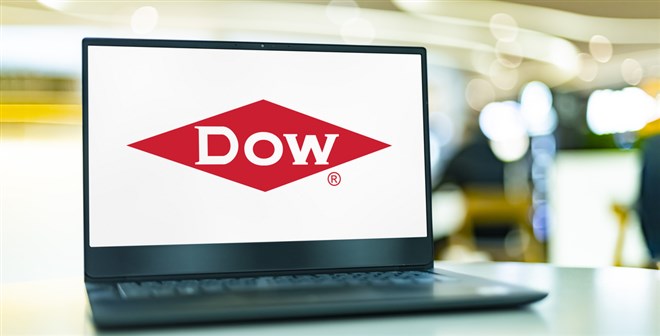
The year 2022 served as a swift reminder for investors and operators, especially those in commodity-based businesses, that the era of easy money may be exhausted. An air of uncertainty and reality checks may be settling across the market due to rising interest rates and elevated commodity prices, which drive input costs. Additionally, a slowing economy is affecting consumer demand for myriad products.
The third quarter of 2022, specifically the month of October, marked a turning point in the United States manufacturing PMI index reading. The widely-followed indicator crossed below 50%, signaling economic contraction (any reading above 50% signals expansion, while any reading below 50% indicates contraction). Continued contraction readings have pointed to an overall slowdown in the U.S. economy. However, sticky inflation has kept input costs for many companies elevated, negatively affecting margins.
Lackluster demand
In the case of DOW (NYSE: DOW), where the majority of revenues are derived from their packaging and specialty plastics segment, which also includes their energy and hydrocarbons operations, consumer demand took the biggest hit in both contracting revenues and compressed gross margins. Within the hydrocarbons operation, DOW produces a substantial amount of ethylene, which is widely used in construction as a fuel for welding and cutting metal. Ethylene can also be further processed into polyethylene, the main ingredient in construction materials such as pipes, siding, and insulation.
Another significant factor impacting the packaging and specialty plastics segment at DOW was the slowdown in global trade and shipping, caused by supply chain bottlenecks across several ports. This resulted in severe reductions in orders for containers and specialty plastic wrapping. The segment's sales volume ended the 2022 year with a 16% contraction from 2021, reflecting both elevated input costs from raw materials and the sharp decline in shipping.
The industrial intermediates and infrastructure segment is the second-largest at DOW, and heavily depends on construction activity and investment globally, with a focus on customers in the United States. In 2022, revenue from construction materials and chemicals declined by 20% as developers across North America and EMEA (Europe, Middle East, Africa) reduced their order volumes due to rising capital costs and other challenges in the construction industry.
The confluence of heating inflationary pressures and rising interest rates in 2022 resulted in DOW experiencing its leanest gross margin fiscal year in the past six years (excluding 2020, which was heavily impacted by lockdown effects). In addition, crude oil prices remained consistently high, hovering mostly above $90 per barrel throughout the year. As oil is the main component in all of the products that DOW makes for its customers, the company experienced significant margin compression due to these factors.
Time to cool off
Despite commodities enjoying a bull cycle in their respective industries, and DOW showing the symptoms of such a cycle, there are some interesting things management has accomplished in order to reduce the current - and most likely future - impacts from the nature of the business.
Despite gross margins being at their lowest levels since 2017, operating margins at DOW came in at their second-highest levels (after the low input cost and cheap capital cycle of 2021), suggesting that some operating factors are seeing clearer and more optimized paths. By optimizing their core activities and implementing technological process improvements while shutting down underperforming assets or factories, labor and service costs are expected to deliver approximately $1 billion USD in savings for 2023.
These efficiency gains, achieved over the past six years and are expected to continue, will shorten the inventory cycle, reduce the need for raw material purchases, and result in shorter turnaround times. These achievements are expected to translate into higher margins, increased liquidity, and most importantly, free cash flow.
Taking off with a silencer
Speaking of free cash flow, the company has returned a significant amount of it back to shareholders as of late. 2020, 2021 and 2022 returned 2.5%, 18.2% and 39.7%, respectively in the form of share buybacks. Even though payouts are becoming larger and larger, it looks like free cash flow generation and overall size is more than outpacing the rate of cash returned to shareholders.
This tells investors more than anything that management believes the stock to be undervalued compared to their own management - or base - valuation case. When taking a look at the asset base, net of debt, investors can arrive at a net asset value (NAV) per share of $60.50 per share in 2022. With the stock currently trading around the low 50s, this represents an initial incentive and margin of safety for investors looking to gain exposure to not only a recovery in construction but also a retreat in the price of crude oil.
Realizing that the stock is in fact below net asset value, and trading at a price-to-earnings ratio of only 8.2x (relatively low for a $35 billion USD market cap company), and a similar 6.6x price-to-free cash flow ratio (again, low), analysts have pointed to a consensus price target of just under $60 per share.
Noting that this price target should only be the start of a reasonable fundamental value level for the company, and that these price ratios are heavily compressed for a large-cap stock, some analysts are pushing a high-scenario toward $81 per share, translating to a more reasonable 12.9x price to earnings ratio.













